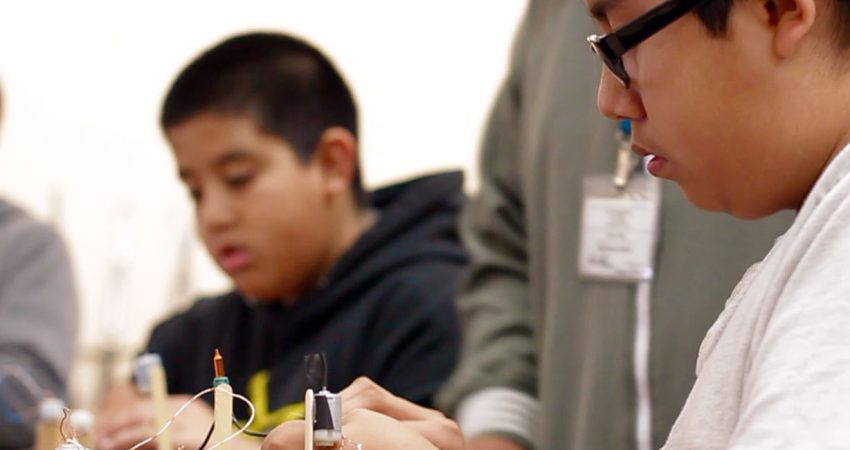
By Suzanne Perin - November 2015
PAPER CITATION
Bricker, L. A., & Bell, P. (2014). “What comes to mind when you think of science? The perfumery!”: Documenting science-related cultural learning pathways across contexts and timescales. Journal of Research in Science Teaching, 51(3), 260–285. doi:10.1002/tea.21134
Current science education reforms emphasize the ways in which students’ scientific practices, such as experimenting, collecting data, and interpreting results, develop over time. Bricker and Bell suggest that practices develop not only over time, but also across multiple settings and opportunities. Their study shows how, over several years, one youth’s identification with science was shaped by many everyday moments, social configurations, and collaborators.
Research Design
The case study examined how everyday moments experienced across settings, pursuits, social groups, and time resulted in scientific learning, the development of expertise, and identification with science. The researchers analyzed ethnographic data collected over the course of more than two years spent with “Brenda” and her mother “Stella.” Brenda was in 4th grade when data collection began. Data were collected in the home, in the community sites Brenda and Stella visited (such as museums), and in Brenda’s elementary classrooms.
Research Findings
Findings show that Brenda’s social relationships provided materials and resources that shaped her thinking about herself as a person who does science. Drawing on a theory of “cultural learning pathways” (see Theoretical Basis ), the paper details the family’s practice of “potion mixing,” which came from many experiences. For example, Brenda noted that her aunt was a chemist and that she had visited the aunt’s lab. When they were younger, Brenda and her cousin liked to mix their grandmother’s perfumes. Stella told a story about how Brenda had used a mortar and pestle to mix cooking spices.
Because of Brenda’s interest in mixing, Stella purchased a “perfumery” science kit for her, and the two of them designed their own perfumes. The authors note that Brenda probably did not learn the formal chemistry about atoms and molecules described in the kit’s brochure. However, learning scientific content is not always the leading goal in developing science interests outside of school. Brenda engaged in many valuable scientific practices as she mixed perfumes: controlling for contamination, measuring materials, tracking and labeling samples, and systematically recording results found through trial and error. The authors argue that these practices, along with Brenda’s management of materials, and the cooperation between Stella and Brenda, are important aspects of STEM learning.
One of many influences on Brenda’s “mixing” cultural learning pathway was a microorganism project in her fifth-grade science classroom. Brenda told the researchers that culturing microorganisms in a petri dish was one of her favorite activities. During parents’ night, Brenda made sure to show Stella the petri dishes and tell her about the project. Brenda’s teacher seemed surprised that Brenda was showing so much enthusiasm; she was not used to seeing Brenda react in this way. The researchers note that this was one of the few times they saw Brenda bring her out-of-school self into school.
Theoretical Basis
The idea of cultural learning pathways frames this paper’s analysis (see Bell, Tzou, Bricker, & Baines, 2012). People learn over the full course of their life span in relation to their cultural and social values and the various contexts and activities in which they participate. The concept of a learning pathway includes interests and identities shaped by everyday moments as well as by formal education.
Implications for Practice
This paper documents both connections and lack of connections across the history of a young person’s learning. The disconnect between Brenda’s mixing practices at home and her enthusiasm in school science outside of the microorganism activity—between everyday activity and more formal learning—has implications for STEM teaching and learning. Research suggests that such disconnects can have long-term consequences for youths’ continuing interest and engagement in the sciences.
Brenda’s perfumery practice suggests that foundational practices may come from everyday pursuits. Her engagement with the microorganism activity suggests that such practices could be leveraged in more structured learning contexts. No matter the setting, science educators can help students develop their identities as science learners by tapping their interests and experiences.
References
Bell, P., Tzou, C., Bricker, L., & Baines, A. D. (2012). Learning in diversities of structures of social practice: Accounting for how, why and where people learn science. Human Development, 55, 269–284. doi:10.1159/000345315




